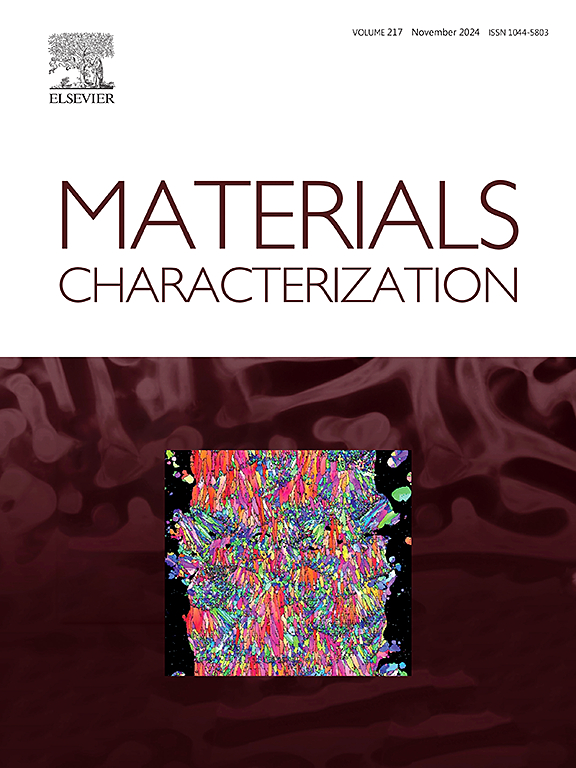The effect of inhomogeneously distributed β-Nb on confined martensitic transformation
IF 4.8
2区 材料科学
Q1 MATERIALS SCIENCE, CHARACTERIZATION & TESTING
引用次数: 0
Abstract
The confined martensitic transformation mechanisms in spatial constraint strategies can provide different combinations of mechanical properties and unprecedented functional properties. In this study, we construct TiNiNb alloys with different β-Nb phase morphologies and distributions in the cross-section and longitudinal section by rolling deformation and analyze the confined martensitic transformation behavior and mechanical properties. It is shown that the inhomogeneous distribution of β-Nb dispersoids produces heterogeneous microstructures, where the NiTi matrix inside the dense β-Nb exhibits nanometer-sized grains, while the matrix around the dispersed β-Nb has micrometer-sized grains. This inhomogeneous distribution characteristic mitigates the obstructive effect of β-Nb on the thermally induced martensitic transformation during the cooling process, causing an increase in martensitic transformation temperature. Similarly, the restraining effect of β-Nb on the stress-induced martensitic transformation during deformation is affected, leading to a decline in the critical stress, which has the possibility to raise the upper limit of the superelastic temperature range. Furthermore, the combined role of β-Nb with dislocation interactions and grain size effects provides a degree of synergistic strength-ductility enhancement. This study offers an available avenue for the development of controllable TiNiNb alloys by modulating the microzone with β-Nb.
不均匀分布的β-Nb对受限马氏体相变的影响
空间约束策略下的受限马氏体相变机制可以提供不同的力学性能组合和前所未有的功能性能。在本研究中,我们通过轧制变形构建了具有不同β-Nb相形态和分布的TiNiNb合金,并分析了其在横截面和纵截面上的受限马氏体相变行为和力学性能。结果表明,β-Nb分散体的不均匀分布产生了非均匀的微观结构,致密β-Nb内部的NiTi基体呈现纳米级晶粒,而分散β-Nb周围的基体呈现微米级晶粒。这种不均匀的分布特征减轻了β-Nb在冷却过程中对热诱导马氏体转变的阻碍作用,导致马氏体转变温度升高。同样,β-Nb对变形过程中应力诱发马氏体相变的抑制作用受到影响,导致临界应力下降,从而有可能提高超弹性温度范围的上限。此外,β-Nb与位错相互作用和晶粒尺寸效应的联合作用提供了一定程度的协同强度-塑性增强。本研究为利用β-Nb调制微区制备可控TiNiNb合金提供了一条可行的途径。
本文章由计算机程序翻译,如有差异,请以英文原文为准。
求助全文
约1分钟内获得全文
求助全文
来源期刊

Materials Characterization
工程技术-材料科学:表征与测试
CiteScore
7.60
自引率
8.50%
发文量
746
审稿时长
36 days
期刊介绍:
Materials Characterization features original articles and state-of-the-art reviews on theoretical and practical aspects of the structure and behaviour of materials.
The Journal focuses on all characterization techniques, including all forms of microscopy (light, electron, acoustic, etc.,) and analysis (especially microanalysis and surface analytical techniques). Developments in both this wide range of techniques and their application to the quantification of the microstructure of materials are essential facets of the Journal.
The Journal provides the Materials Scientist/Engineer with up-to-date information on many types of materials with an underlying theme of explaining the behavior of materials using novel approaches. Materials covered by the journal include:
Metals & Alloys
Ceramics
Nanomaterials
Biomedical materials
Optical materials
Composites
Natural Materials.
 求助内容:
求助内容: 应助结果提醒方式:
应助结果提醒方式:


